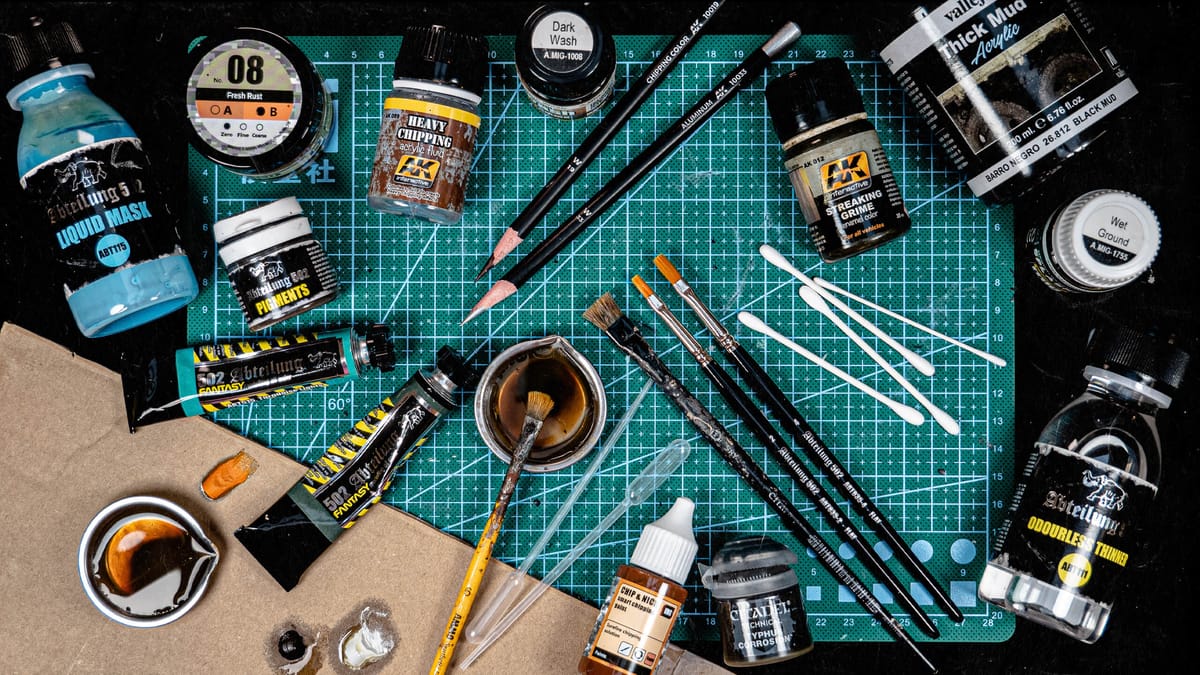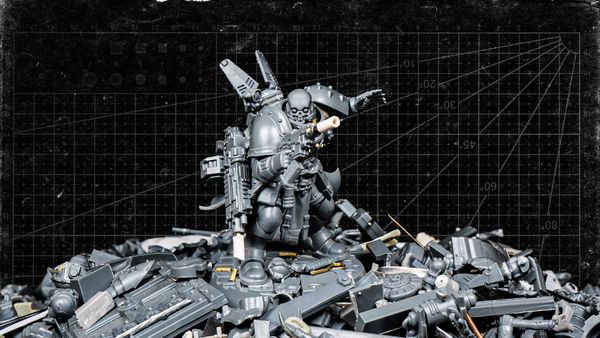Tools of the Trade: Weathering Essentials
As a complement to my guide to painting essentials, let's go over the equipment you'll need to master the basics of weathering techniques, whether you're just starting out or looking for recommandations to upgrade your toolkit.

While the basic equipment for weathering is similar to what's required for miniature painting, this practice is specific enough to warrant detailed attention. The vast array of specialized tools, products and solutions available can be overwhelming for many. Leveraging my own experience, I have created a guide to assist beginners in understanding this topic, as part of a series of comprehensive textbooks filled with recommendations.
In the first part of this guide, we’ll discuss some extra tools and applicators that you may find helpful to include in your toolbox. Then, we’ll explore various products for creating chipping effects, with or without an airbrush. Following this, we’ll focus on paints used for washes, filters and panelining. Lastly, we’ll discuss different effect paints and texturing solutions while also briefly looking at some personal protection equipment.




